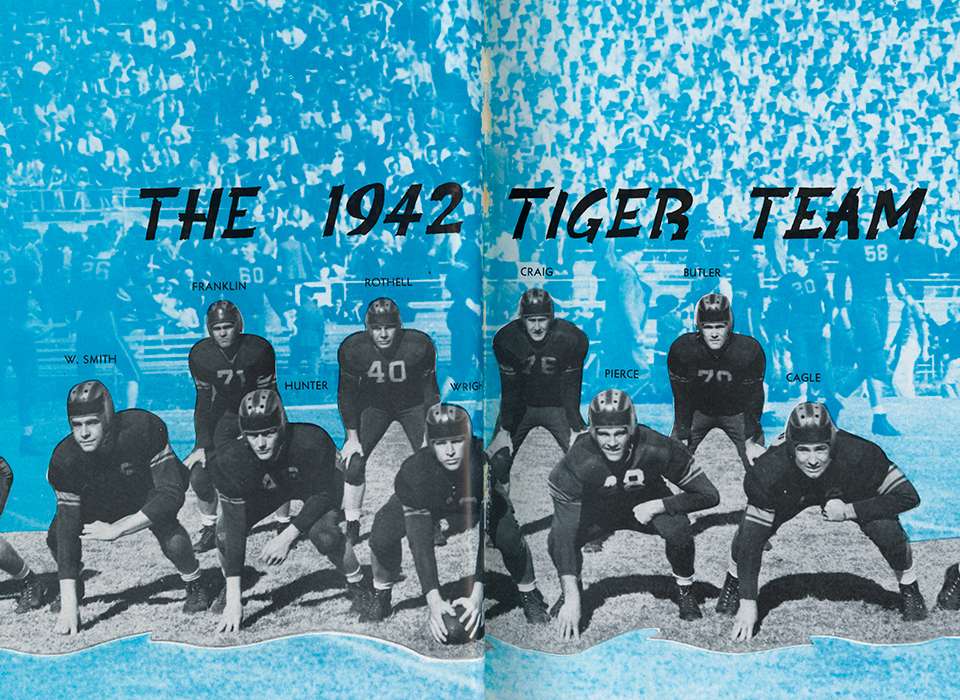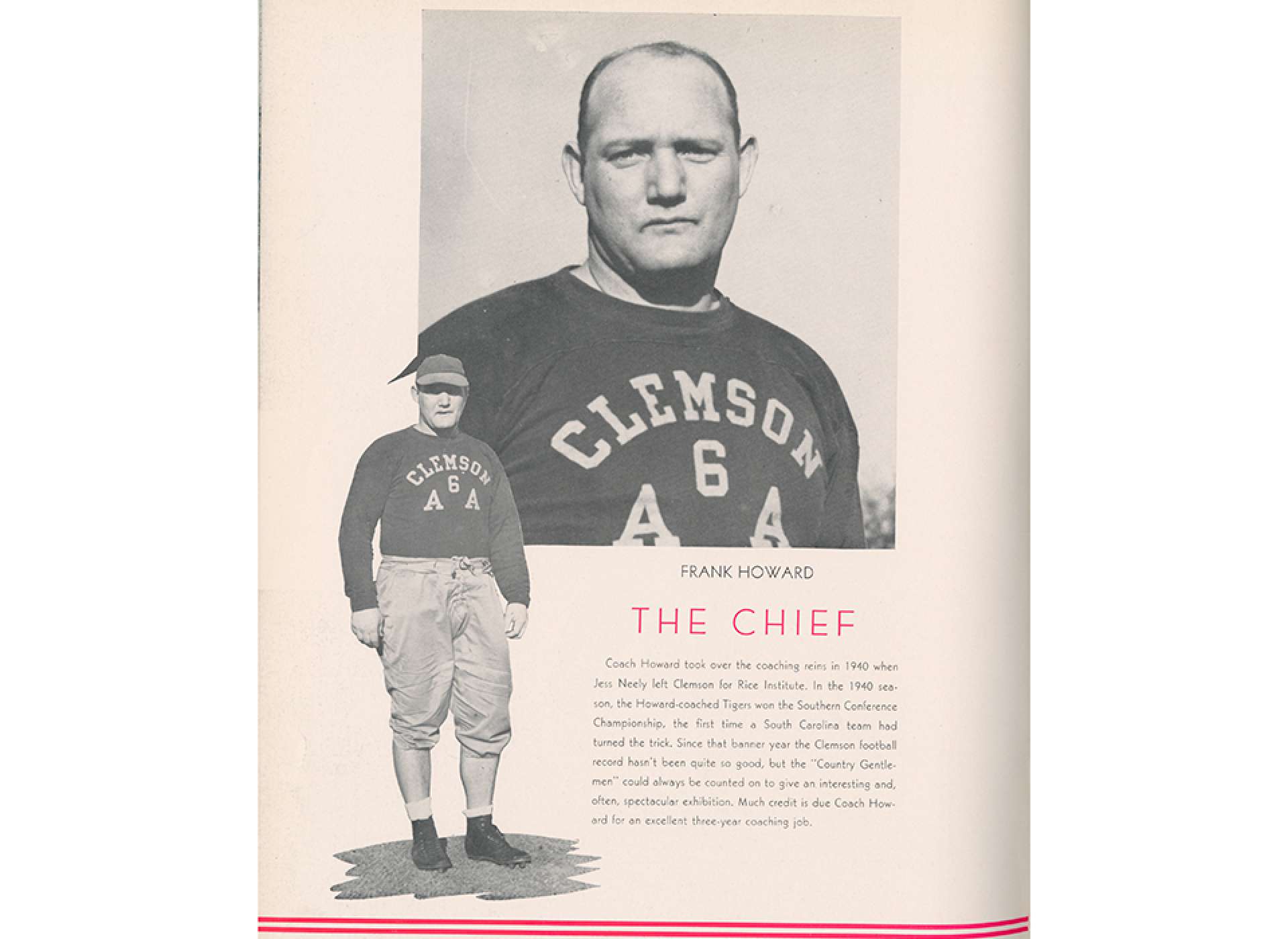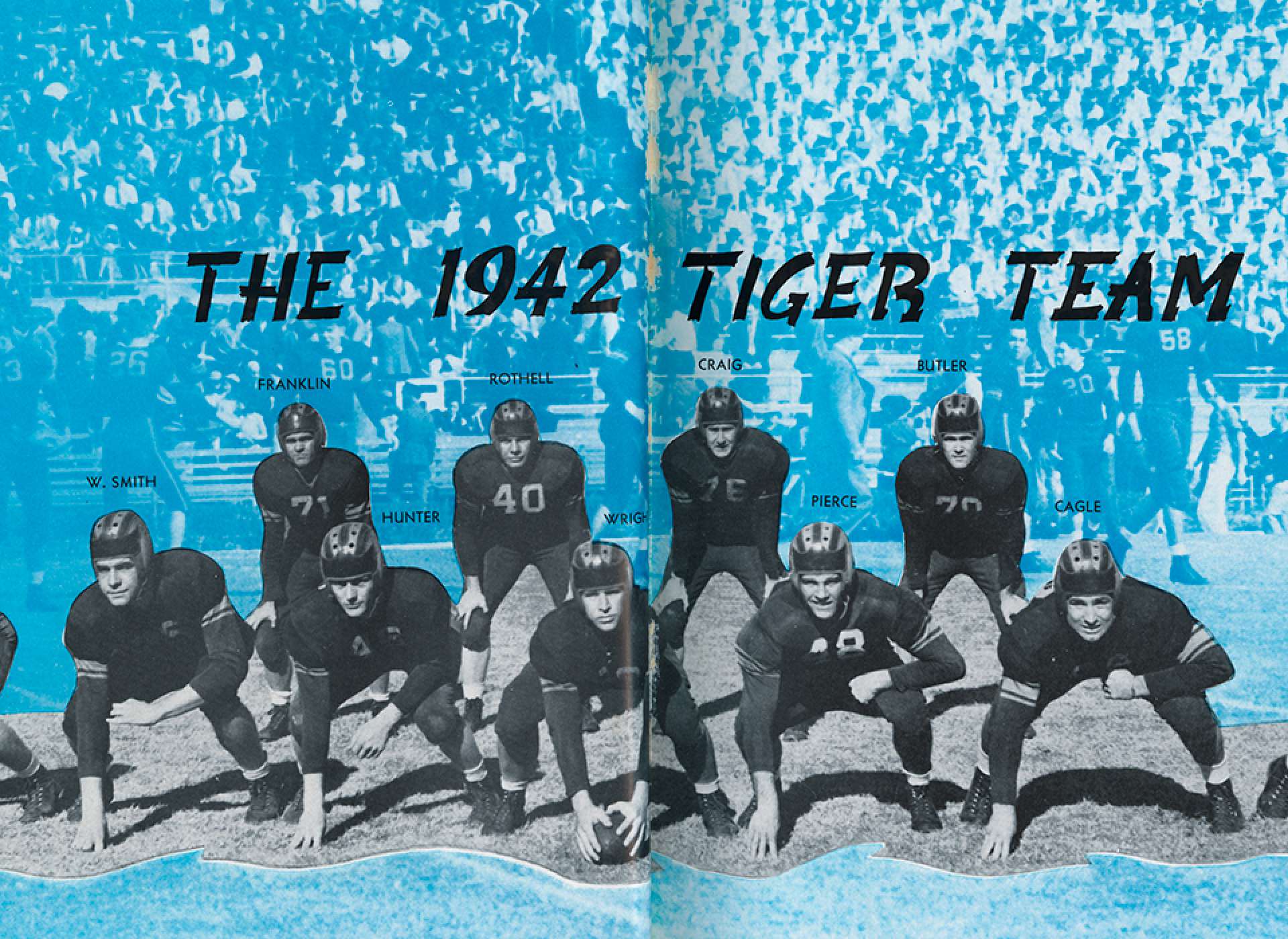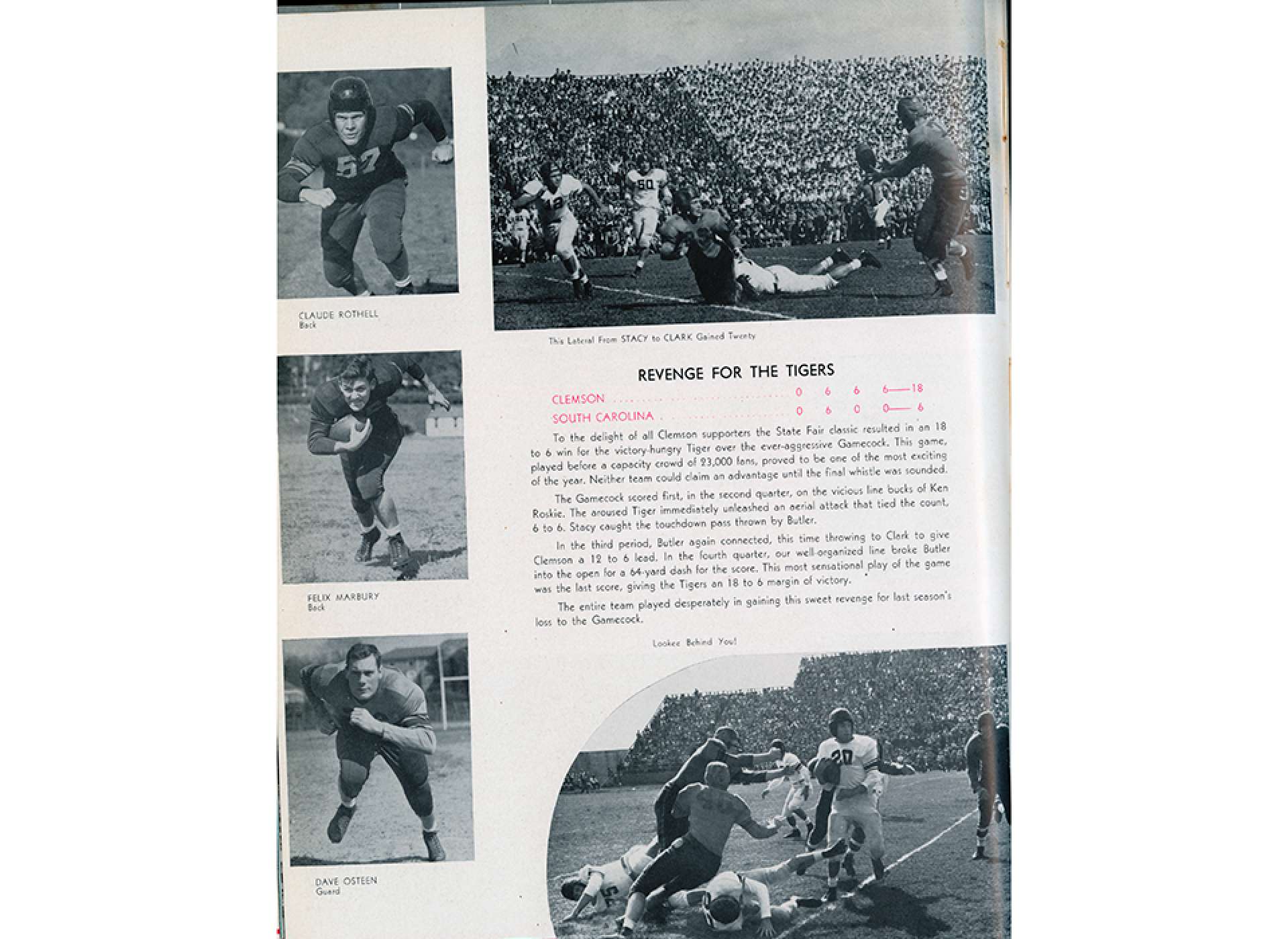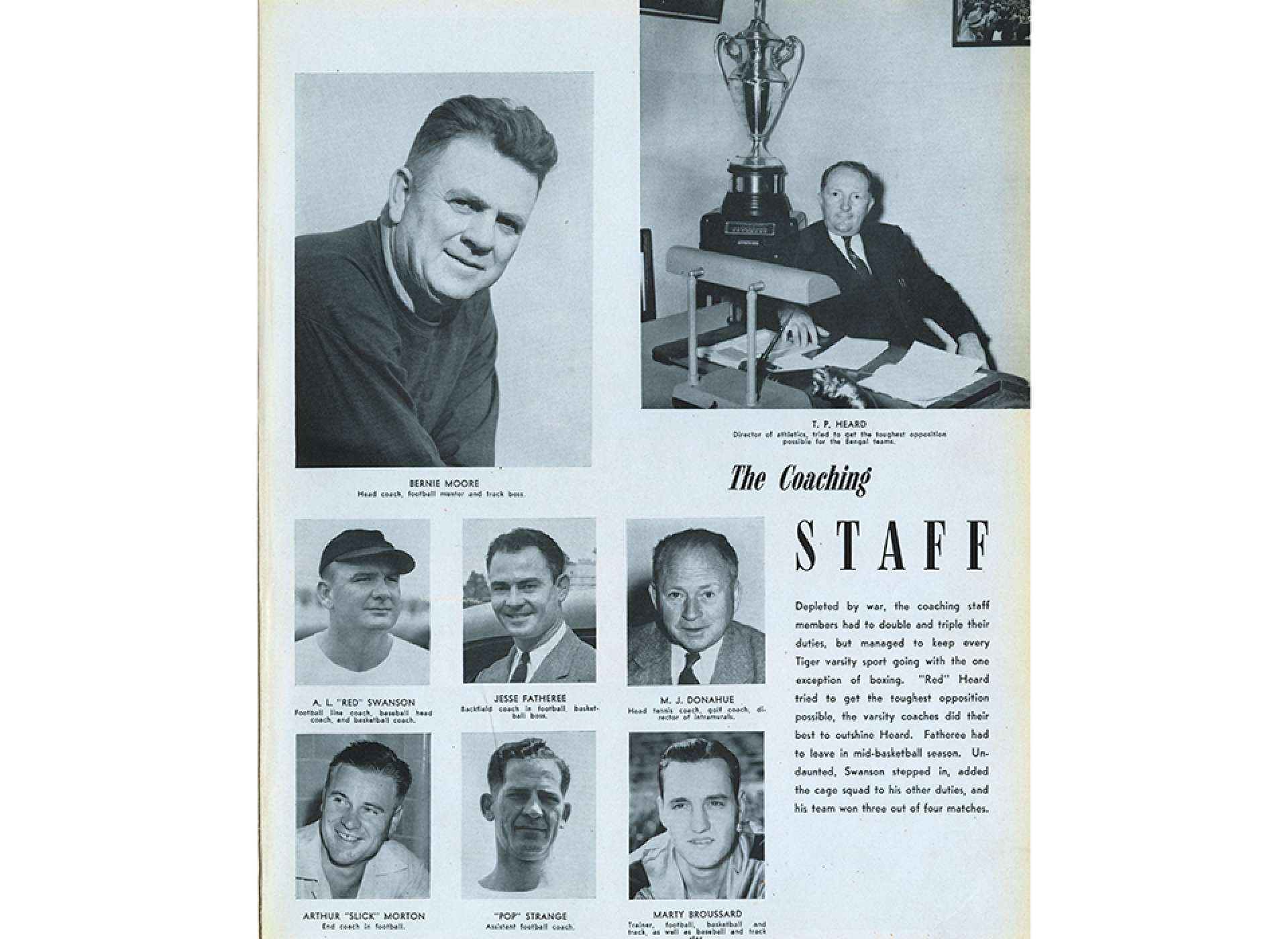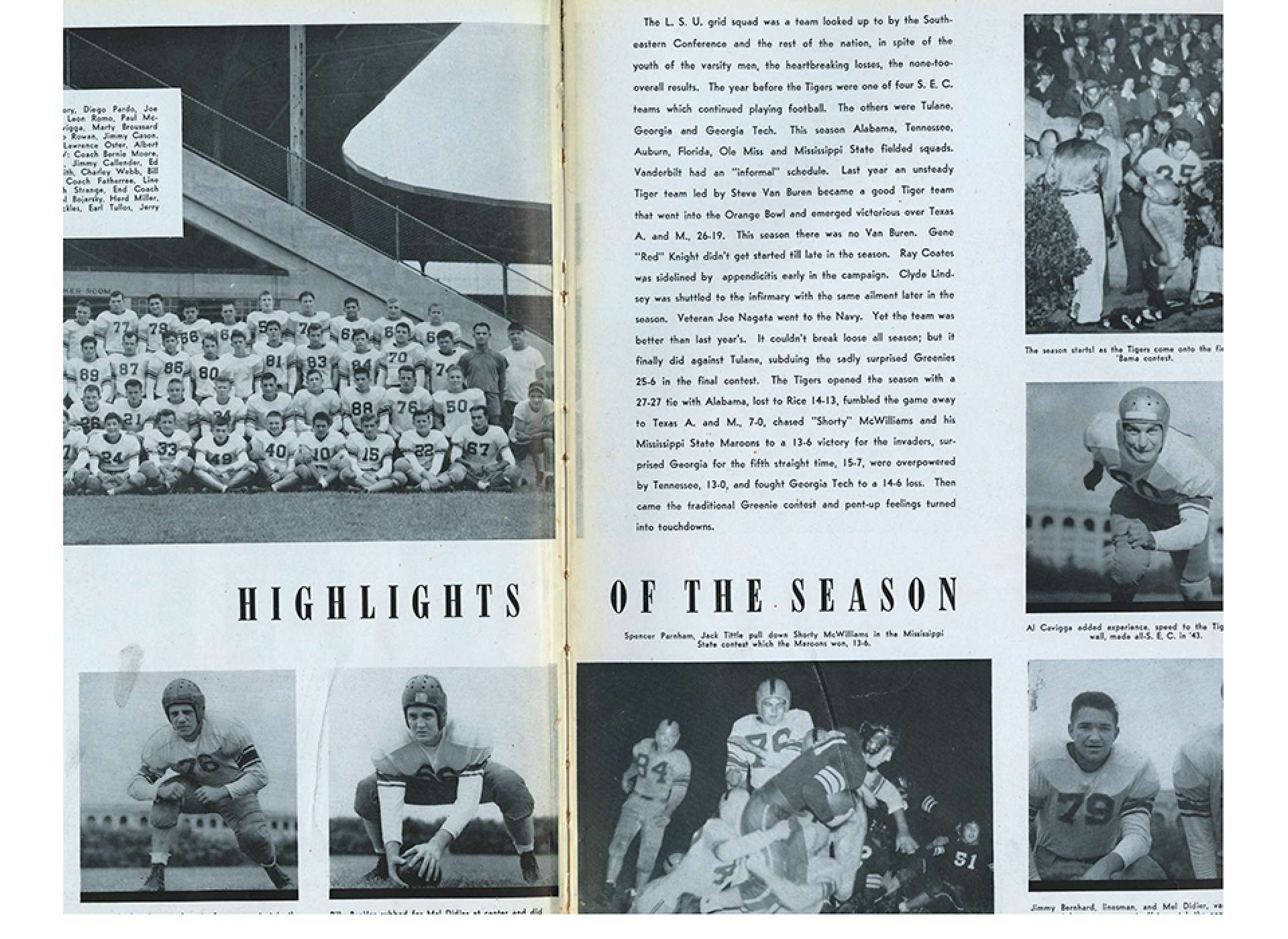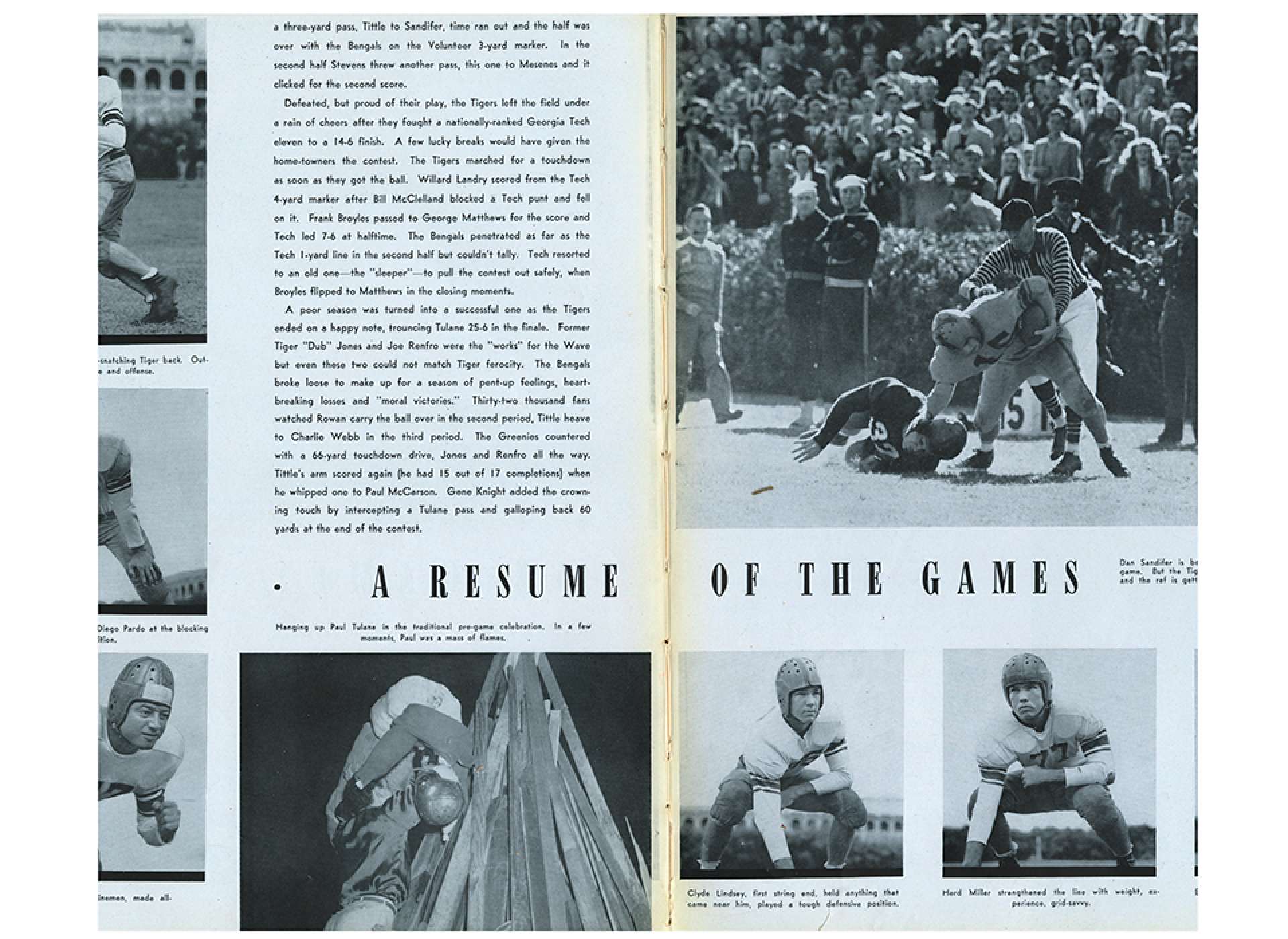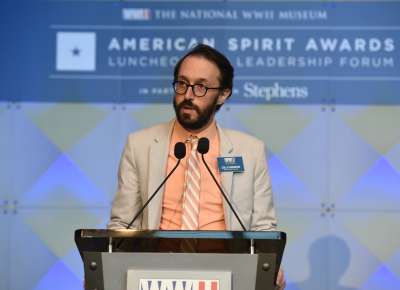Though Clemson and LSU did not face each other during the years between 1941 and 1945—indeed, the two schools would not meet for the first time until the 1959 Sugar Bowl—each program found itself challenged by the demands of wartime.
As chronicled in the pages of the 1943 ‘Taps’ yearbook, the 1942 Tigers of the-then Clemson A&M College fielded a squad massively depleted by the military draft, featuring only five Senior classmen. However, what the Clemson Tigers may have lacked in experience they more than made up for in leadership. They were coached by the legendary Frank Howard who would go on to coach at Clemson for the next 30 years. Taking over the helm in 1940 after head coach Jess Neely left for Rice, in his first year Howard led Clemson to win the Southern Conference championship with a record of 6-2-1.
The 1942 campaign would not be nearly as successful for Clemson, but did feature its share of highlights. Clemson’s Memorial Stadium and the field that would one day bear Frank Howard’s name opened with a 32-13 victory over Presbyterian College on September 19. Following a loss to Boston College, Howard’s Tigers rebounded in an upset away victory against the rival South Carolina Gamecocks on October 22. Quoted from the pages of ‘Taps:’
‘To the delight of all Clemson supporters the State Fair classic resulted in an 18 to 6 win for the victory-hungry Tiger over the ever-aggressive Gamecock. This game, played before a capacity crowd of 23,000 fans, proved to be one of the most exciting of the year. Neither team could claim an advantage until the final whistle was sounded…The entire team played desperately in gaining this sweet revenge for last season’s loss to the Gamecock.’
After a Homecoming win against Furman, the 1942 Clemson season ended on November 28 with a crushing 41-13 defeat at the hands of another set of Tigers, those of the Auburn Polytechnic Institute, now Auburn University. Finishing with an overall record of 3-6-1 in 1942, the Clemson football program under Coach Howard would truly begin to hit its stride over the next decade-and-a-half, winning the Southern Conference championship in an undefeated season in 1948 before capturing six Atlantic Coast Conference (ACC) championships in the 1950s and 60’s. During this span, Howard would be twice named ACC coach of the year and would later be inducted into the College Football Hall of Fame in 1989.
The 1943 Clemson A&M College ‘1943 Taps’ Yearbook
-

Clemson Football Head Coach Frank Howard. The National WWII Museum Education Collection.
-

1942 Clemson Tiger Offensive Linemen. The National WWII Museum Education Collection.
-

Clemson defeats South Carolina. The National WWII Museum Education Collection.
Two years later and 600 miles to the southwest, the Louisiana State University Tigers were riding high. As recorded in the pages of the 1945 ‘Gumbo’ yearbook, the the 1943 team ended the season with a record of 6-3 and saw LSU defeat Texas A&M in the Orange Bowl. All 19 of LSU’s points came courtesy of halfback and Warren East High School graduate Steve Van Buren who rushed for two touchdowns, passed for one more and kicked LSU's only successful extra point in a 19-14 victory over the Aggies. Unfortunately for the Tigers, Van Buren, who led all of college football in scoring in 1943, then entered the NFL draft. He was selected with the 5th overall pick by the Philadelphia Eagles, and no one on the 1944 Tiger squad would prove capable of replacing his output.
Under the leadership of Coach Bernie Moore, the ‘Gumbo’ yearbook shows a Bayou Bengal coaching staff worn thin by the manpower shortages of World War II. Coach Moore coached both the football and the track team while A.L. “Red” Swanson pulled triple duty as both the line coach and head coach for the baseball and basketball teams. LSU was not the only program to be feeling the strain, as the ‘Gumbo’ yearbook details that in the previous year the Tigers were one of only four Southeastern Conference (SEC) schools to field a team alongside Tulane, Georgia and Georgia Tech. Vanderbilt is said to have adopted an ‘informal’ schedule, playing only four games the entire season.
Similar to the Clemson Tigers of 1942, the LSU Tiger season of 1944 could be seen as an overall disappointment had it not been for victory in its season finale. After beginning the 1944 season with a 27-27 tie against Alabama on September 30 at Tiger Stadium, LSU dropped its next three games, losing to Rice, Texas A&M and Mississippi State. The losses continued, with LSU being shut-out at home by Tennessee, then falling 14-6 at home to Georgia Tech, who would eventually win the SEC that same year. Redemption of a sort came in the LSU victory against one of their biggest rivals: the Tulane University Green Wave in the annual Battle for the Rag. Written in the pages of the ‘Gumbo:’
‘A poor season was turned into a successful one as the Tigers ended on a happy note, trouncing Tulane 25-6 in the finale. Former Tiger “Dub Jones” and Jen Renfro were the “works” for the Wave, but even these two could not match Tiger ferocity. The Bengals broke loose to make up for a season of pent-up feelings, heart-breaking losses and “moral victories.”’
The 1945 Louisiana State University ‘Gumbo ’45’ Yearbook
-

LSU Football Head Coach Bernie Moore and Assistants. The National WWII Museum Education Collection.
-

1944 LSU Tiger Football Season Highlights. The National WWII Museum Education Collection.
-

LSU defeats Tulane in the Battle of the Rag. The National WWII Museum Education Collection.
The LSU Tigers wound up the 1944 season with an overall record of 2-5-1. LSU football would rebound under Coach Moore and later Coach Paul Dietzel winning its first ever National Championship in 1958 and defeating Clemson in the 1959 Sugar Bowl by a score of 7-0.
Go Tigers!
Geaux Tigers!
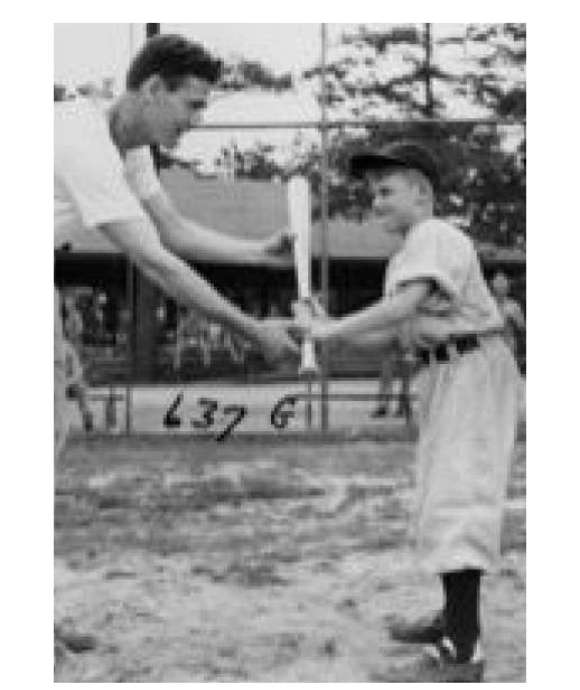
A Secret History Behind a Bat Boy’s Photograph with Ted William
Baseball boosted American morale during World War II and whipped soldiers, sailors, and pilots into fighting shape.
Collin Makamson
Collin Makamson is the former Assistant Director of Education for Curriculum at The National WWII Museum.
Cite this article:
MLA Citation:
APA Citation:
Chicago Style Citation:
